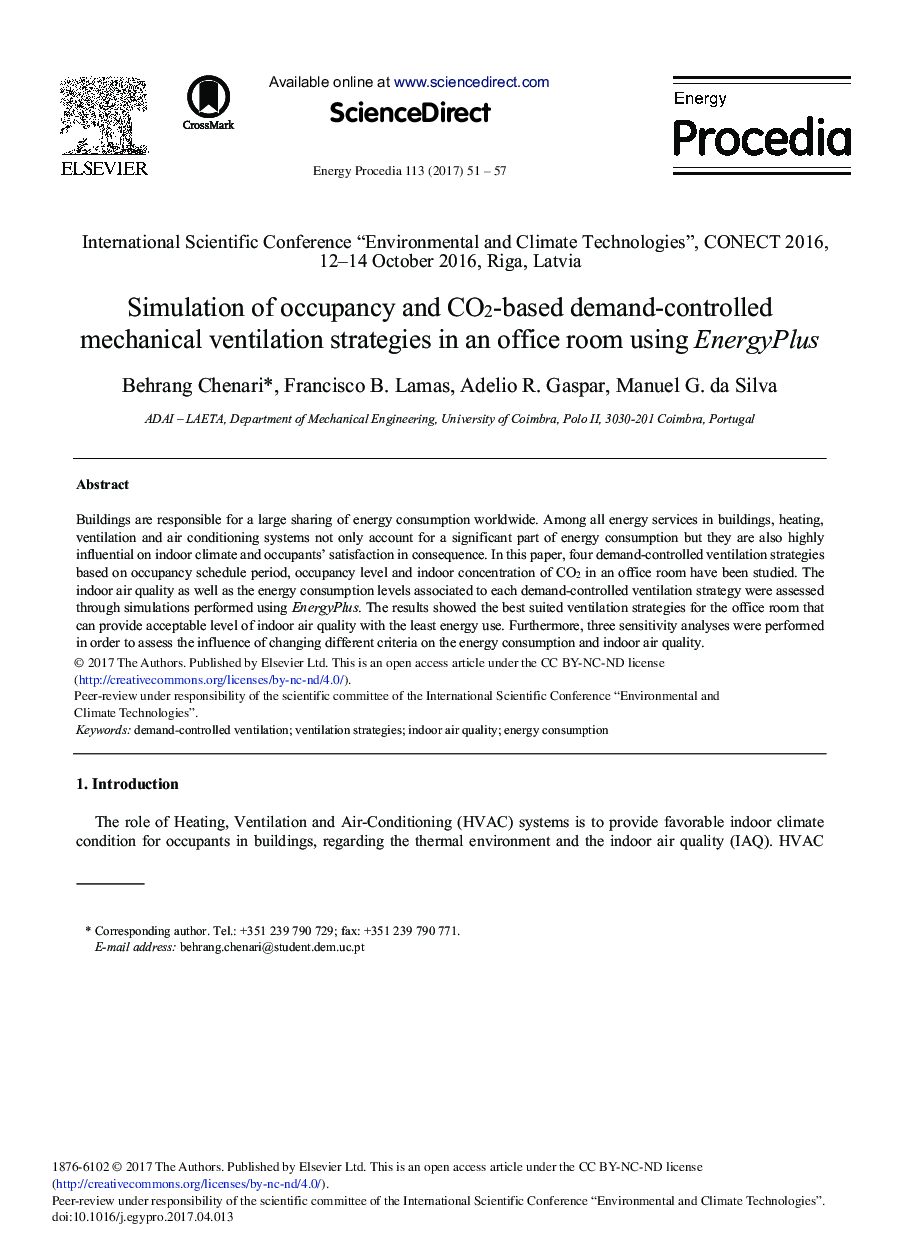| Article ID | Journal | Published Year | Pages | File Type |
|---|---|---|---|---|
| 5445626 | Energy Procedia | 2017 | 7 Pages |
Abstract
Buildings are responsible for a large sharing of energy consumption worldwide. Among all energy services in buildings, heating, ventilation and air conditioning systems not only account for a significant part of energy consumption but they are also highly influential on indoor climate and occupants' satisfaction in consequence. In this paper, four demand-controlled ventilation strategies based on occupancy schedule period, occupancy level and indoor concentration of CO2 in an office room have been studied. The indoor air quality as well as the energy consumption levels associated to each demand-controlled ventilation strategy were assessed through simulations performed using EnergyPlus. The results showed the best suited ventilation strategies for the office room that can provide acceptable level of indoor air quality with the least energy use. Furthermore, three sensitivity analyses were performed in order to assess the influence of changing different criteria on the energy consumption and indoor air quality.
Related Topics
Physical Sciences and Engineering
Energy
Energy (General)
Authors
Behrang Chenari, Francisco B. Lamas, Adelio R. Gaspar, Manuel G. da Silva,
